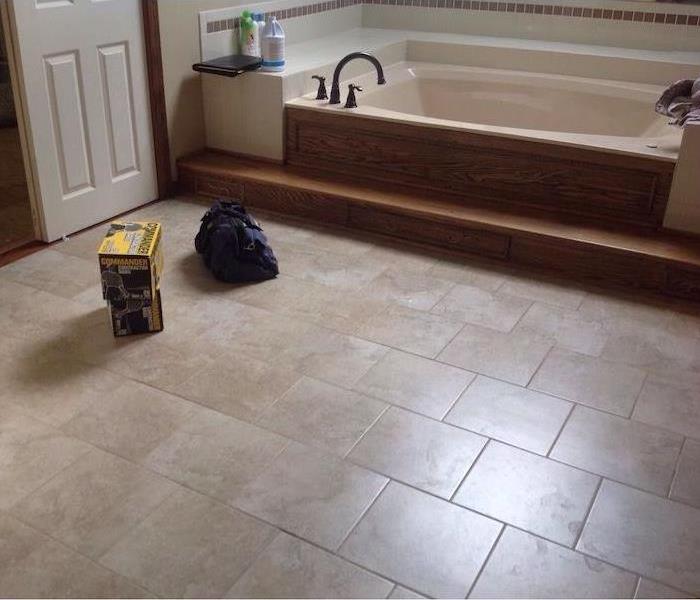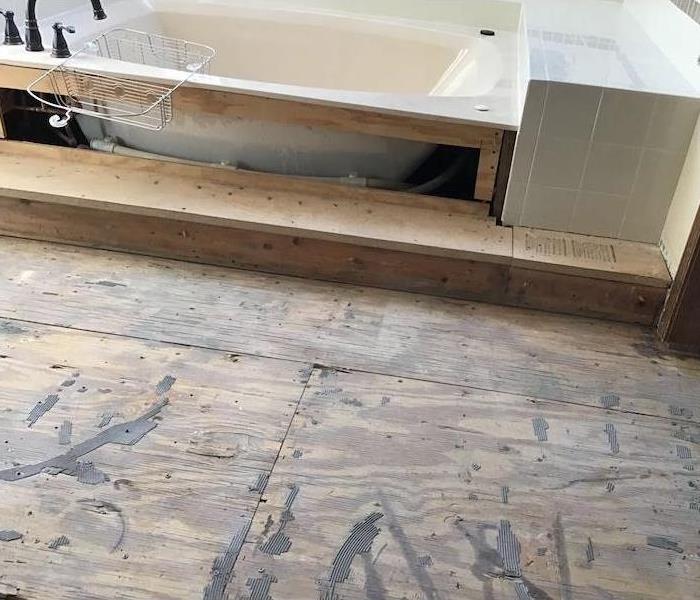
Step 4: Drying and Dehumidification
Our Water Damage Restoration Process
Using Drying and Dehumidification for Kansas City Water Damage
After thorough water extraction has been performed, SERVPRO technicians can focus on preparing your home and its contents for drying with air moving and dehumidification equipment. Not only does the process remove the rest of the moisture from your Kansas City home, but it aids in removing water damage odors and returning structural components to an appropriate level of humidity.
Drying Theory Is Key to Successful Restoration
Successful drying in a given Kansas City residence relies on making accurate calculations that account for four factors:
? Temperature
? Humidity
? Air movement
? The amount of moisture that requires evaporation
Types of Air Moving and Dehumidification Equipment Used
Structural drying relies on centrifugal air movers, which are carefully positioned for drying in tandem with dehumidifiers; and axial fans, which can exchange as much as 3,200 cubic feet of air per minute. Axial fans are ideal for exchanging indoor air with outdoor air before and after deodorizing a structure.
Two main types of dehumidifiers are also utilized during drying. These include low-grain refrigerant units, which pass humid air over refrigerated coils to collect condensation and emit warm, dry air, and desiccant dehumidifiers, which pass this air over a desiccant material like silica gel to achieve the same goal.
Both types may be used during drying, depending on what has been affected by water and the ideal moisture levels necessary for that item to return to its normal state.
Drying / Dehumidification
Our Professionals will use room measurements, temperature, and relative humidity to determine the optimal number of air movers and dehumidifiers to dry your home or business. We’ll carefully monitor the progress using moisture meters until the materials return to acceptable drying goals.
- Use Dehumidification Equipment
- Use Monitoring Equipment to Track Progress
Monitor Floor and Walls
We check the moisture levels to monitor the drying process.
- Monitor Floors
- Monitor Walls
Drying Equipment
- Industrial-grade dehumidifiers help prevent secondary water damage like swelling and warping of floors, walls, and furniture.
- High-speed air movers create airflow across walls, carpets, pads, and furniture, which accelerates the evaporation of moisture.






 24/7 Emergency Service
24/7 Emergency Service




